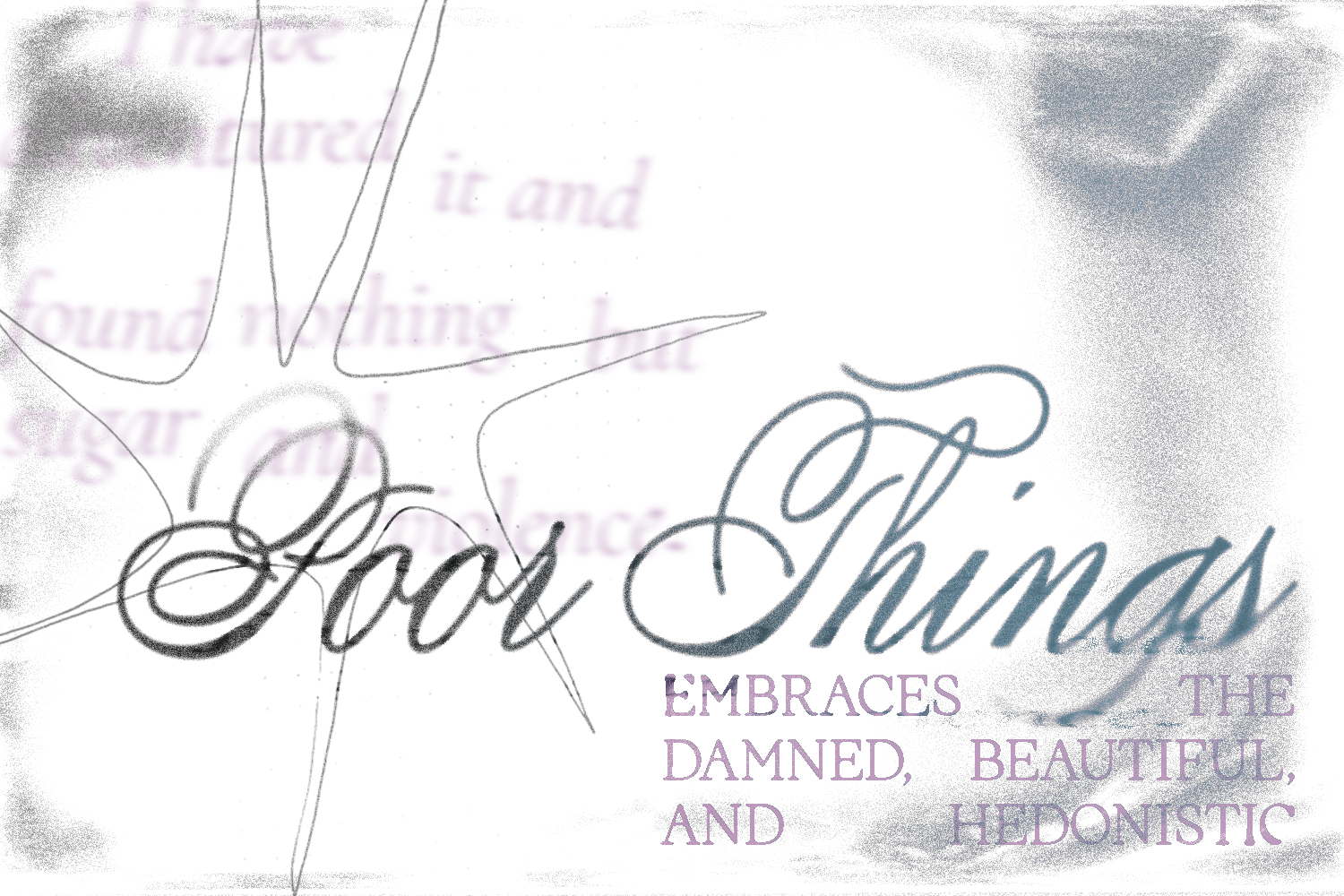A child’s candor first develops into curiosity, then into judgment. Their persistent “whys” and starry eyes make sense of wonder and the world. Blue is only a color until they understand sadness. And then sadness is just another word to collect on top of grief and melancholy. Nature gives children great emotional resilience to help them survive the oppressions of being small. Bella Baxter is a woman reborn in a gothic tale where the world is cruel and she is innocent. Poor Things is her Odyssey.
Her world is impossibly beautiful and impossible to ignore, from its stunning art direction to the colors bleeding into a menagerie of oddity. This is Yorgos Lanthimos’ most visually extravagant film yet. How can you expect me to sit through a movie where every frame looks as if it could be hung in a museum and not swoon? The holy grail that is “Poor Things’” cinematography almost outshines everything else I loved about the film. Almost.
I haven’t looked at clothing the same since Holly Waddington’s use of keeping Bella grounded in her fantastical brain. Bella’s early life is shown through vignettes as she (re)gains consciousness, but wardrobe changes do more for narrative shifts. She turns character growth into abstract by aging Bella through puff-sleeved babydoll dresses into blouses derived from sexual connotations. Waddington made a point of drawing inspiration from the pointed critique burdened upon children. They must be kept small, because this world has three kinds of people: childish fools, selfish optimists, or equally selfish cynics.
Bella isn’t trapped in any of these distinctions. She has a free, contemporary aura as she embraces a different rule of three: sexuality, absurdity, and pleasure. Bella is judged only by her choices—the decision to have more sex, to remain kind and empathetic, to become a doctor. I have never felt closer to such indulgence than I did after watching this movie. Then Poor Things premiered in theaters, and the unified gushing I surrounded myself with paled in comparison to the polarizing public opinion.
Outside the frame of Lanthimos’ adaptation exists two kinds of critics. First, the ones that seek less art-face metaphors and second, the ones that want more blatant commentary. They battle for what deserves to be more excessive, which defeats the purpose of indulging in everything. There’s beauty and grandeur, yes, but these things are granted equal value with politics. One can brush over an odyssey of a feminist parable—of Bella’s ascent into socialism and sexuality—if they squint and wear foggy glasses and plug their ears. But in unseeing Poor Things’ political nature and only seeing sex, we risk missing what makes the film so indulgent.
Hedonism calls for the pursuit of pleasure. As the theory goes, pleasure is the highest good and proper aim of human life. In seeking self and one’s standing within society, is sex not a component in that journey? There’s the choice of interpretation and value we individually put upon it. The physical act of sex barely scratches the surface of the internal exploration given to embracing sexuality. So in all the sex scenes we watch with compositional focus on Emma Stone’s feet and breasts, at what point is it gratuitous? Is there a numerical measure for when sex has done its job for the narrative and the camera can turn its lens to other visually interesting things? I have a preference for that, as does every other viewer.
Like Bella, we are shaped and changed as the world reveals its true colors to us, as society demands both our delight and despair. People are reflections of the circumstances that damned them and kept them hopeful, accepting that we are born again to give meaning to this poor, poor thing (living on earth).
Words by Bri Shufford.
Graphic by Reem Hinedi.

